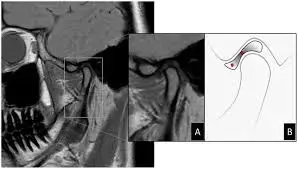- Home
- Medical news & Guidelines
- Anesthesiology
- Cardiology and CTVS
- Critical Care
- Dentistry
- Dermatology
- Diabetes and Endocrinology
- ENT
- Gastroenterology
- Medicine
- Nephrology
- Neurology
- Obstretics-Gynaecology
- Oncology
- Ophthalmology
- Orthopaedics
- Pediatrics-Neonatology
- Psychiatry
- Pulmonology
- Radiology
- Surgery
- Urology
- Laboratory Medicine
- Diet
- Nursing
- Paramedical
- Physiotherapy
- Health news
- Fact Check
- Bone Health Fact Check
- Brain Health Fact Check
- Cancer Related Fact Check
- Child Care Fact Check
- Dental and oral health fact check
- Diabetes and metabolic health fact check
- Diet and Nutrition Fact Check
- Eye and ENT Care Fact Check
- Fitness fact check
- Gut health fact check
- Heart health fact check
- Kidney health fact check
- Medical education fact check
- Men's health fact check
- Respiratory fact check
- Skin and hair care fact check
- Vaccine and Immunization fact check
- Women's health fact check
- AYUSH
- State News
- Andaman and Nicobar Islands
- Andhra Pradesh
- Arunachal Pradesh
- Assam
- Bihar
- Chandigarh
- Chattisgarh
- Dadra and Nagar Haveli
- Daman and Diu
- Delhi
- Goa
- Gujarat
- Haryana
- Himachal Pradesh
- Jammu & Kashmir
- Jharkhand
- Karnataka
- Kerala
- Ladakh
- Lakshadweep
- Madhya Pradesh
- Maharashtra
- Manipur
- Meghalaya
- Mizoram
- Nagaland
- Odisha
- Puducherry
- Punjab
- Rajasthan
- Sikkim
- Tamil Nadu
- Telangana
- Tripura
- Uttar Pradesh
- Uttrakhand
- West Bengal
- Medical Education
- Industry
MRI is a reliable tool for the detection of TMJ disc perforations, reveals study

MRI is a reliable tool for detecting TMJ disc perforations according to a study published in the Journal of Cranio-Maxillofacial Surgery.
This study aimed to evaluate the reliability of magnetic resonance imaging (MRI) in detecting disc perforations in the temporomandibular joint (TMJ), and to establish diagnostic criteria for this purpose. The retrospective analysis included patients who had undergone preoperative MRI and TMJ arthroscopy at the same hospital. Direct and indirect signs of disc abnormalities on MRI were compared with arthroscopic findings of disc perforation. Out of 355 joints evaluated in 185 patients, arthroscopy confirmed disc perforations in 14.7% of cases. Several MRI findings were significantly associated with disc perforation, including anterior disc displacement without reduction (ADDwoR), signal alterations in the mid-disc area, disc deformity (SAMD), retro condylar disc fragments, osteophytes, condylar bone marrow degeneration (CBMD), and joint effusion in both joint spaces (ESJS-EIJS). Regression analysis revealed that SAMD, osteophytes, and CBDM were strongly associated with disc perforation. The ROC curve showed that MRI had an AUC = 0.791, with a sensitivity of 88.5% and a specificity of 61.5%. Two diagnostic methods, one based on three findings (osteophytes, ADDwoR, and SAMD) and one based on two direct signs (ADDwoR and SAMD), yielded high sensitivity and specificity values of 80.4% and 69.8%, and 84.3% and 62.5%, respectively. In conclusion, MRI demonstrated acceptable accuracy in detecting TMJ disc perforations, with specific diagnostic criteria offering high sensitivity and specificity. Significant MRI indicators of disc perforation included SAMD, osteophytes, and CBDM. This study provides valuable information on the use of MRI as a diagnostic tool for TMJ disc perforations.
Reference:
Alejandrina Millón Cruz, Rafael Martin-Granizo, Simona Barone, Luis Miguel Pérez Rodríguez, Salomé Merino Menéndez, Farzin Falahat Noushzady, Javier Arias Díaz,
Reliability of magnetic resonance for temporomandibular joint disc perforation: A 12 years retrospective study. Journal of Cranio-Maxillofacial Surgery. Volume 52, Issue 5,
2024, Pages 548-557, ISSN 1010-5182. https://doi.org/10.1016/j.jcms.2024.04.005.
(https://www.sciencedirect.com/science/article/pii/S1010518224001434)
Keywords:
MRI, reliable tool, detection, TMJ disc, perforations, study, Journal of Cranio-Maxillofacial Surgery, Magnetic resonance imaging; Temporomandibular joint; disc perforation; Arthroscopy, Alejandrina Millón Cruz, Rafael Martin-Granizo, Simona Barone, Luis Miguel Pérez Rodríguez, Salomé Merino Menéndez, Farzin Falahat Noushzady, Javier Arias Díaz
Dr. Shravani Dali has completed her BDS from Pravara institute of medical sciences, loni. Following which she extensively worked in the healthcare sector for 2+ years. She has been actively involved in writing blogs in field of health and wellness. Currently she is pursuing her Masters of public health-health administration from Tata institute of social sciences. She can be contacted at editorial@medicaldialogues.in.


